The Adelaide General Post Office building was the result of an architectural competition won in 1866 by local architects Edmund Wright and Edward Woods. Their design was subsequently modified and the freestone classical building was opened in 1872 with great celebration. It played a significant role in receiving the first message along the Overland Telegraph Line in 1872. The General Post Office clock tower is named the Victoria Tower and was the tallest building in Adelaide into the twentieth century. It was a significant public building for Adelaide when it was built and continues to function as a post office and a city landmark over 140 years later. The post office ceased to operate from the building in 2019.
Building Design and Construction
The Adelaide General Post Office replaced an earlier and much smaller post office building which had been built in 1851 and stood on a site to the north of the current site on King William Street. When it was no longer able to fulfil the functions as required, an architectural competition was held for a new General Post and Telegraph Office on the site on the corner of King William Street and Franklin Street. The winning design by architects Edmund Wright and Edward Woods was announced in April 1866 (‘The General Post Office and Telegraph Station’, 1866, 3.). However Wright and Woods were asked to alter their winning design and the final building was also influenced by Edward Hamilton, as well as Robert Thomas who had submitted the second placed design. Hamilton became a partner in the Wright and Woods practice not long after, and Thomas was made the Colonial Architect and superintended the work, in which role he reduced the final height of the clock tower. The style chosen for the General Post Office was one which was echoed across Australia, as‘[m]onumental Italianate became the dominant mode in Australian post-offices between the late 1850s and the 1880s’ (Hamann, ‘Post Offices’, 552).
The builders of the stone and brick building were Messrs. Brown and Thompson and the foundation stone was laid by the visiting Prince Alfred, Duke of Edinburgh on 5 November 1867 and witnessed by 3500 people. Although the competition brief specified the cost of the completed building was to be no more than £20 000, in 1872 the cost had reached £53 258, before the clock tower was even completed. The clock and bells had added a further £2038 to the final expenditure by 1876 (‘Bells of Adelaide’, 1929, 5). The General Post Office was opened on 6 May 1872 with great celebration. Some twenty years later in 1891-3, further extensions by the same architects were made with the north wing on King William Street added to house new telegraph and administrative offices.
Clock Tower
The General Post Office tower is named the Victoria Tower and stands 158 feet (48 metres) tall, not quite matched in height by the Albert Tower atop the Town Hall across King William Street. With its flared cupola roof the tower that stands on the King William Street and Franklin Street corner of the building was completed only in 1876. Made by John Taylor of Loughborough (United Kingdom), the Victoria Tower bells that chime on the quarter hour were installed in December 1875, with chimes ‘copied from those of Westminster Abbey’ (‘Bells of Adelaide’, 1929, 5). The clock was made to the specifications of Postmaster-General Charles Todd by Joyce and Son of Whitchurch, Shropshire (‘Post-Office Clock’ 1876, 6).
The Grand Postal Hall
Inside the imposing local freestone building, the grand postal hall with its two-storey volume, half-domed roof, and clerestory lighting was a feature not only for its architectural magnificence but also for its innovative planning with discrete offices arranged around it perimeter. These offices included those for ‘money order, ship letter, inland, stamp, delivery, and private box department[s], and also the telegraph receiving office … The telegraph operating room [was] on the upper floor’ (‘The New General Post and Telegraph Office, Adelaide’, 1877, 21). Visiting writer, Anthony Trollope, harboured some reservations about this plan, writing, ‘I went over the building, and knowing something of post-offices, I regret to say that the arrangements might have been improved by consultation with English officials’ (Trollope, Australia, 639-40). The postal hall has been recognised as an early exemplar of planning around an internal public space (‘Adelaide General Post Office’ Commonwealth Heritage List).
Postal Service
The postal delivery service in South Australia began on the ‘25th of May 1839 … the first occasion on which mails were delivered to residents of the city’ (Manning, ‘Essay 16’). This was the same year in which the Post Office Act was passed. Adelaide was an important mail exchange for overseas mail destined for the eastern colonies of Australia that arrived by steamer at Port Adelaide. This role continued to grow in importance after the intercolonial rail line between Melbourne and Adelaide opened in 1887 (Burke, The stamp of Australia, 71), and changed little until the rail line to Perth opened in 1917 and Port Adelaide lost its place of prominence to Perth (Burke, The stamp of Australia, 71). The Postmaster-General and Superintendent of Telegraphs, Sir Charles Todd, became known as ‘one of the most notable public servants of Australia in the nineteenth century’ (Jenkins, ‘Sir Charles Todd’).
Telegraph Offices and Telephony
The General Post Office housed the Chief Telegraph Office, where the first international telegraph message was received along the Overland Telegraph Line (which ran through an undersea cable, then overland from Darwin to Adelaide) on 22 October 1872. This was a significant moment, reducing the time it took to get overseas messages from months to hours. That this was achieved by South Australians was celebrated heartily, and widely praised in the national press: ‘To the people of Adelaide the honour is due of establishing the overland telegraph line to Port Darwin and on all occasions they have shown themselves foremost among Australian colonists in enterprise and energy’ (‘The New General Post and Telegraph Office, Adelaide’, 1877, 21). In 1883-4 a telephone exchange was added to the General Post Offices facilities and in 1894 a new switchboard, made in Chicago in the United States, was installed (‘Adelaide General Post Office’ Register of the National Estate). By 1907-8 a separate telephone exchange building was constructed to the west of the post office to house the increasing needs of telephony. Over the years alterations and additions to the building have reflected the changing nature of postal and telecommunications, but the building maintains an important place in the city of Adelaide.
Civic Pride
The General Post Office building has been important to Adelaide’s citizens as a symbol of progress and civic pride, it was the ‘most expensive building constructed to that time by the colonial government in South Australia’ (‘Adelaide General Post Office’ Commonwealth Heritage List). In 1873, Trollope recorded that ‘The one building in Adelaide on which the town most prides itself, – and of which at the same time the colony is half ashamed because of the expense, – is the Post Office. I was gratified by finding that the colonies generally were disposed to be splendid in their post-offices rather than in any other buildings, – for surely there is no other public building so useful’ (Trollope, Australia, 639-40). While Richard Twopeny, author of Town Life in Australia in 1883, described it thus, ‘Of the public buildings, the finest is the Post Office, which, … is, in my opinion, preferable to either the Melbourne or Sydney Post Offices’ (Twopeny, Town Life in Australia, 28). The significance of the Adelaide General Post Office is reflected today by its inclusion on local, state and commonwealth heritage registers.


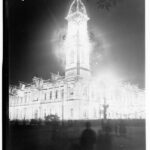

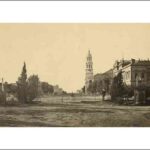
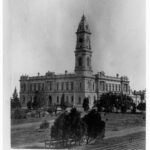
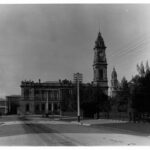
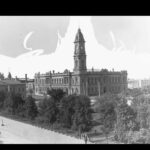
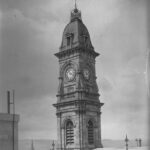
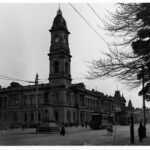
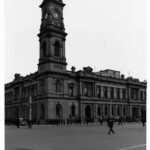
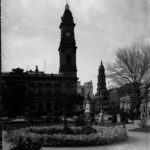
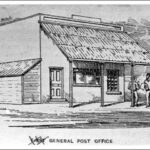
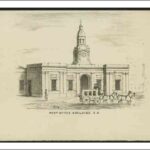
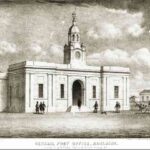
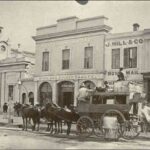
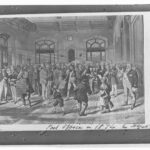
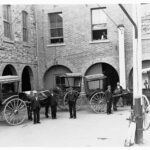
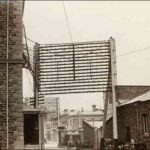
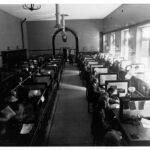

Comments
28 responses to “Adelaide General Post Office”
I understand that Australia Post sold the building a few years ago, is there any information on this? Also interested in who maintains the clock these days.
Hi Michael,
I’m afraid we don’t hold that information, you could try asking Adelaide City Council, or since the building is heritage listed you may be able to find some information by enquiring through the Department of Environment & Heritage.
Michael Lindner is quite correct – the Adelaide GPO building is owned by CBRE which appears to be a subsidiary operating in Australia of a US owned company.
Source: Australia Post and en.wikipedia.org/wiki/CBRE_Group
Can we save the historic Telegraph sites in the Adelaide GPO?. The first speedy comms link with the world in 1872! From Thje Gateway Adelaide GPO over his the toric Overland Telegraph – Alice Springs -Darwin and undersea telegraph cable to London. Letters taking months by ship/steamer to just hours by the electric Telegraph. Make that Telegraphj Office into a museum with the Charles Todd collection and Telegraph Equipment plus the story of comms from the 19th century to the 21st centuiry comms. explosion. Inter-active disaplay of Austral9a’s comms history and heritage ! My fraternity celebrates the O.L.T.L. comms “ICON” every year. Let’s keep it alive !!!!!
It’s certainly history worth preserving Laurence.
In London where we lived from 1968 to 1970 letters were delivered through the letter slot in the front door. Despite many homes in Adelaide having such postal slots [sometimes combined with a door knocker] in their front doors were letters ever delivered that way in Adelaide, rather than into the fence post box, and if so over what time period?
Garry
Good question Garry, I don’t know the answer, will see if we can find out.
I’m interested in when street post boxes first appeared in the Adelaide Hills. A few photos of early post offices around here show post boxes on the road outside. We’re hoping to date an early photo.
That’s a good question Judith, I’m afraid I don’t know the answer off the top of my head, we’ll have to do some digging.
To whom it may concern, i worked for the PMG as a telegram boy and became a postie when i turned 18 and i was just wanting to know if there is anything like a postal museum in Adelaide
To my knowledge there is no museum in Adelaide that specifically deals with post history Frank, though it is a fascinating topic.
Hello, my mother worked in the Postmaster General office in the early 1940s. She once mentioned a machine she used that was either a recording device or an adding machine. I had never heard the name of it before so cannot recall what it was called. Do you have any clues?
Various recording devices have been used at different points in time. Did she give you any more description of it Anne? You might find this history interesting: https://www.environment.gov.au/heritage/ahc/publications/linking-a-natio…
hi. Can you tell me anything g about the “heads” you can see in the details of the front of the post office are they artists? Boticelli? thanks. deborah
I’m afraid I don’t know the answer to that Deborah, I’ll see if we can find out more.
My father, Arthur Roe Bayly, worked in Adelaide Post Office just prior to the outbreak of WW2 and I was wondering if there is any information on my Dad that I could use in his eulogy?
It doesn’t look like we have anything on file here Malcolm but you could try searching the National Archives records: http://naa.gov.au/collection/fact-sheets/fs50.aspx
Are there any pictures of the inside of the Post Office, that aren’t just the Great Hall? I’m specifically interested in the cabinet in which the weather reports and maps were posted. It might have been on the wall inside the southern entrance.
A quick trawl through the catalogue doesn’t bring up anything like that Mac, I’ll get back to you if we do find anything, but another good place to try is the State Library, you can search their photographic collection online: http://www.slsa.sa.gov.au
Hi Mac – as a High School student in the late 60’s (and mad keen on the weather) I use to check this out on my way home 9am synoptic chart and rainfall bulletin. I also remember a stunning old barometer there as well – and yes it was in the southern entrance – unfortunately I never took any photos. I often wonder what happened to that barometer.
Hi, I am doing my family history and have found evidence of a relative, Edward Lancaster Fawcett Squire who started in Robe in 1863 and in 1875 was appointed to dual position of Deputy Postmaster-General and Superintendent of Telegraphs under the Postmaster General (Charles Todd). I am looking for any information on his career if you are able to assist? Regards, Helen Squire.
Hi Helen,
We don’t have any information on file here, but if you have not already looked at State Records I would suggest trying there https://www.archives.sa.gov.au/
Best of luck with your research.
Good afternoon,
Could you please tell me if there are any tours of the GPO?
Thank you,
Jane
Not to my knowledge Jane, but it may be worth getting in touch with the GPO directly to see if they will offer anything.
The photograph at the top of the home page appears to be reversed.
The smaller night photograph is the correct way around.
Good spotting on that Roger! I’ll see if we can get it fixed. If you click on Media you can see all the full photos.
My great great grandfather was a stone mason on this building are there any employment records or old pictures of the Masons at work that we could access when we visit Adelaide in Nov.
Hi Lesley,
The records related to Australia Post and its post offices are all held at the National Archives of Australia, you might find something there – https://www.naa.gov.au/help-your-research/getting-started
Otherwise if it’s information on the history of the building the State Library of South Australia would be a good place to start: https://www.catalog.slsa.sa.gov.au/
There is an Adelaide Masonic Centre Museum, if he was a member, as stone masons often were, you might find information there as well – http://explorehistory.com.au/organisation/adelaide-masonic-centre-museum
Best of luck with your research!